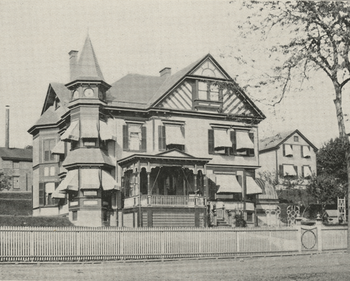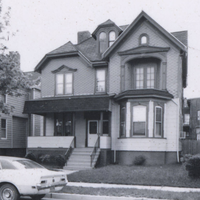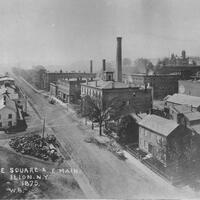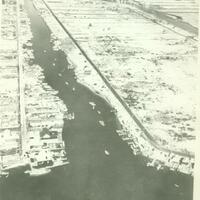The City of Hudson, founded in 1785 by businessmen and whalers from Nantucket and Rhode Island looking for a safe harbor to carry on their shipping business, has a long history of boom and bust. By the late 1800s to early 1900s, when Henry S. Moul worked as a builder and architect, the era of whaling and commerce had long ended and Hudson had a renaissance as an industrial city:
There were ironworks, brickworks, foundries producing parlor stoves and ice harvesting tools, factories making fire engines and railroad car wheels, knitting mills, and two large cement plants just over the border in Greenport. The bustling seaport that emerged at the end of the 18th century roared into the 20th century a rumbling, smoke belching, gritty city. [from A History of Hudson by Carole Osterink, author of The Gossips of Rivertown, a blog of news, history, and commentary about Hudson, NY]
During this era Hudson’s architecture emphasized Gothic Revival, Italianate and Second Empire. And the two local architects of the time, Henry S. Moul and Michael J. O’Connor, designed in eclectic style “with overtones of the Romanesque.” [from Historic Hudson: An Architectural Portrait by Byrne Fone]
Henry S. Moul was born in Victor, New York in 1857. Beginning in 1875 he apprenticed as a carpenter with James E. McClure, purchasing the business upon McClure’s death. In 1896 he began working as an architect. He was also active in the public life of Hudson; he served as supervisor and chairman of the Columbia County Board, ran for mayor in 1903, and was involved in business and religious organizations.
Moul built combined retail/residential buildings on Warren Street, and many Hudson residences including those on McKinstry Place (in those days one of the new posh neighborhoods in Hudson). In addition, Moul also designed public and commercial buildings such as the Columbia County Courthouse in 1900 (subsequently destroyed by fire in 1907), the Anshe Ameth Synagogue in 1909 (now Shiloh Baptist Church), and the Union Knitting Mill. The buildings he designed, many of which are still standing, are some of the best known and most highly acclaimed buildings in the city. [information from Columbia County at the End of the Century, published and edited under the Auspices of the Hudson Gazette]




